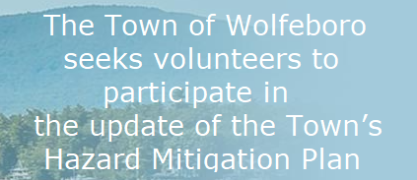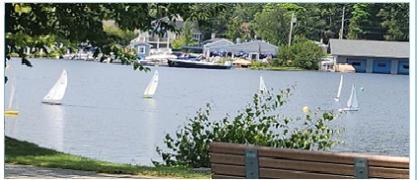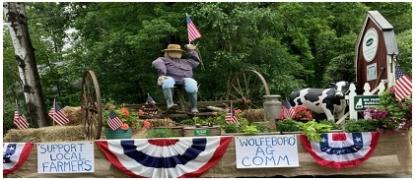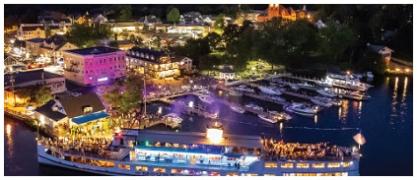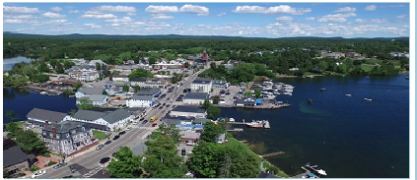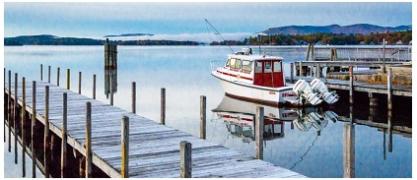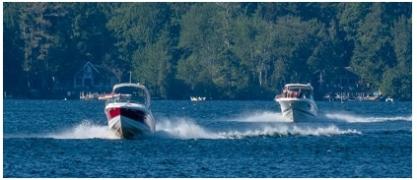WW Meeting Minutes - Assessment Committee
Water Assessment Committee
01.12.21. Meeting Minutes
Attendees:
Linda Murray, Abigail Adams, Warren Muir, Beth Marcoux, Steve Wingate, Andra Dekkers, Emilie Clark
12pm
Warren opened the meeting by introductions and requesting that the members all introduce themselves and talk a little about themselves and their background.
After the introductions Warren spoke of the photos and data that he sent to everyone. There is a lot of information we have not yet received. The Covid-19 virus has affected almost everybody that we have worked with and the data has been prolonged in coming because of that.
Amanda McQuaid may be at our next meeting. She is the New Hampshire DES person regarding cyanobacteria.
Bigelow Labs has been slowed down as well.
Warren asked if anyone had any questions about the documents he sent out.
Andra
I thought your questions were a great way to try and get the big picture and be able to focus on where we’ve been where we want to go. Do you plan to do a deeper dive through the data?
Warren
Yes. I thought we’d take a look at the data as we go along. Do you agree with the preliminary answers that I put down? Were there other questions that you think should be on here? Do you agree with what I put down?
Abby
I think the questions are quite inclusive. I did wonder about something.
What other cyanobacteria are present in Winter Harbor? In addition to gliatriccia, anabaena has been there, we’ve seen pico and we’ve also seen all the other four microsystems link about which I didn’t even know about. Are you saying we’ve seen all of those?
Warren
Yes. It is from the DNA analysis that has been done and from a couple of samples that I took to DES. It is from those samples that the data was derived.
When we have Amanda, she will be able to sit down with us and help us define what are the other issues we want to track. She is the lead cyanobacteria for the state and has been dealing with all the different lakes and trends and blooms. In addition, the state has some more samples and results of Winnipesaukee and Wolfeboro that I wasn’t aware of, the results of which we may have in a week.
Andra
I just want to add the makeup of the biological growth. What else other than cyanobacteria are we watching. The metaphyton seemed to fall into that category, but I didn’t see that listed here. I think we should add that to our inventory. I think pages numbers would be helpful.
Emilie
Could you talk a little bit more about the concept of phosphorus limited vs nitrogen limited?
Warren
The thought is that cyanobacteria analogy need a certain amount of nutrients to grow just like plants do on land. Two key elements are nitrogen and phosphorus. The cyanobacteria will grow up to the limit of the availability of those nutrients. It will stop growing when it runs out of the limited nutrient. The general belief has been that in the ocean things tend to be nitrogen limited and, in the lakes, tend to be phosphorus limited. The amount of growth is limited to the amount of phosphorus available. There are certain lakes where the two are in balance, but most lakes are usually uneven in one or the other. There is almost always more nitrogen than phosphorus. I thought it might be good for us to check and see what the nitrogen levels were in Winter Harbor for example and see if the ratio is above 20. In each case the level was well above 20. Nitrogen is a more mobile chemical. It is less tied up with the sediment. The nitrogen can flow out of septic systems more easily than the phosphorus because it doesn’t get tied up in the sediment.
Warren discussed the numbers and measurements of the documented tables of sample results. Grab samples were near the top of the water and integrated samples where from a tube that was used from the surface on down where there is a temperature break. The phosphorus levels were significantly higher this year.
Andra
This table represents sampling that was done in Wolfeboro, Winnipesaukee other than Winter Harbor. I don’t recognize all the codes.
Abby
The only one I don’t know is HOBBLE. The one that says broad Winni WBORD, is the Broads, Tips Cove was added this year. The reason the disk was so shallow there is that the water level was very low. There are two sites in Back Bay. One is by the Back Bay buoy and one is by where they have the jumps. JCD is Jockey Cove. One is shallow and one is deep. Admins Cove is pretty self explanatory. Win DWOLD is a deep site. One is off of Clark Rd.
Warren
We’ve got a little map that shows all the points for these sites.
Abby
WOLD is a deep site off of Clark Rd., The one that says HOBBLE was not done this year.
Warren
The Phosphorus numbers are all quite low. There is nothing worrisome in any of these numbers. There is also nothing in the Chlorophyll A numbers that are a concern.
Abby
With the exception of Back Bay the numbers are high.
Warren
I gather there are at least two different things affecting the numbers of Back Bay for this year. We had a severe drought and Back Bay has a significant input from the Smith River, flowing from Cresent Lake, which I presume was less than in past years. Linda was mentioning that there was treatment for milfoil in some years and limited extent in other years and that there may be a lot of dead milfoil and dead plants that might be influencing the numbers.
Linda
It in 2018 there was a full bay treatment, nothing in 2019 and in 2020 there was a parital one. In 2021 we’ll just do the small area of the frog pond. There is also two significant inflow from the streets there along with a sawdust bottom from the 1930s. There was a time when we dumped sewage in there. All sorts of stuff was dumped in that area. Foss field was found to have contaminiated soil. A lot of inflow, lot of legacy issues there.
Warren
There has been a watershed assessment that has been done. Several on Winnipesaukee. Tuftonboro did one that Wolfeboro bought into that included all of Winter Harbor. There is a lot of detail analysis. We put a lot of input into that. It also goes to the state and will help guide the state in making available matching funds for various mitigations. Similar studies have been done for Russ Pond, one for Wentworth and Cresent Lake and also Mirror Lake. The stuff is being covered/monitored. We would like for that to continue and go all around the Wolfeboro Winnipesaukee, especially would like to see it happen for Back Bay. The lake is so small that it may not be much of a problem to mitigate. If Pat Tarpey were here, she is the head of Lake Winnipesaukee Assoc. Is this likely to happen in the near future.
Linda
I think that Wolfeboro Waters should push that happening in 2022. We have no money to do it in 2021. We should keep the testing going in order to feed into all of that.
Warren
We did additional sampling to try and answer questions. I’m sure it would be helpful for this as well. We should in 2021 continue the level of testing that we have been doing.
Linda
I know that Pat Tarpey is looking for people to do the sampling testing.
Steve.
We completed the Tuftonboro piece of the Winnipesaukee watershed testing.
For our watershed we got about a $75,000 grant and the town came up with another $15,000. I can check with Pat on that for the latest news.
Warren
I think the conversation should be for the Wolfeboro Waters committee with our subcommittee being in full support of it.
Linda
We can recommend that the Wolfeboro Waters committee move forward on the watershed management plan.
Warren
We need someone to move a motion.
Warren
We recognize the importance of the watershed management plan for the rest of Wolfeboro Waters and support having one done.
Andra
Seconded the motion.
Rollcall vote:
Beth
Yes
Steve
Yes
Emilie
Yes
Abby
Yes
Linda
Yes
Chair votes
Aye
Abby
In summary all of the parameters, typically people are looking at phosphorus, except in Back Bay.
Warren
Except in Back Bay and Winter Harbor under certain circumstances the numbers have not been that high. Nor have they been high for Chlorophyll A. There are blooms in Mirror Lake. What we found out from Winter Harbor is that if the measurements are low, it is not the only marker that indicates issues.
Steve
We are not sampling in every outlet. We used to sample down where Mirror Lake comes in and we got the same numbers for Mirror Lake. I sampled for the Basin, water flows in and out. It is pretty much like Mirror Lake. It is recommended management on the shoreline. But you could go other places and get different numbers.
Andra
During Summer months the numbers are pretty low. The numbers change at the beginning of Winter.
Steve
I get my first samples when the ice goes out. The numbers are pretty good then. As the season goes on and as soon as the boating starts the numbers go up dramatically.
Warren
We collected some stuff down at our end of Winter Harbor and a bunch of it is high. It seems to be associated with the snowmelt and the runoff from Fall storms.
Maybe look at Mirror Lake next. You can see that the Mirror Lake numbers show that many samples that have been done in the top layer of the lake, but there are also some that have been done in the deep part of the lake. Those are at different times. It is also clear that in February they drilled a hole in the ice at three different levels and got a February measure. The phosphorus levels were at 12.7 at the top, 6 at 5 meters and deeper. When you get to August, there are three levels then. The top layer on September is 12.2, at 8 meters it’s 10.9 at 11.5 meters it is 105. There is a huge build up at the bottom of the lake. There is a temperature gradient at 7 or 8 meters. When that forms in the summer at the top of the lake there is not much mixing at the top and bottom of the lake. Undoubtedly there is little or no oxygen at the bottom of the lake in the Summer.
There is a study of the cyanobacteria that is on top of the bottom layer of the lake. There is a bloom. It is feeding off of the phosphorus at that bottom of the lake. These are legacy that are not easily going to go away.
Andra
How do they do the sampling for that specific depth.
Warren
We have that ability, too. UNH has loaned us some equipment. It is a tube with a spring on it and a line. You lower it to the depth you want and then spring it so it grabs the sample and closes at a specific depth. There is a deep hole in Winter Harbor and we sampled that bottom layer over the Summer of 2019 and the numbers went up to 30. In Mirror Lake it is a much bigger area and it is dumping phosphorus all across the lake.
Switching to Winter Harbor
We don’t have any new data for any of the other lakes. We did a lot of different things. Summarized on a sheet. Summer of 2020. What type of sampling, for whom, and a bunch of the analyses from NH DES and Bigelow we have yet to get. You can see that we’ve done lots of different things. Traditional sampling at six different sites at our end of Winter Harbor and Steve has being doing other samplings at the Tuftonboro end of Winter Harbor. We’ve also done some other samples monthly through the Winter, through the non-Summer months.
We also have a Tow net that you can vertically drag or horizontally drag. And then a zapper device. We also have a fluorometer. It measures two different fluorescence. It is a way of measuring cyanobacteria.
We had drone pictures taken. Three sets during the Summer months that Peter Goodwin did looking down at the shallow waters along the shore to see what it looks like. You can see the growth from the pictures. When you get at a certain depth you can see growth.
Abby
Some of the reason for no growth at the shore is from people disturbing the water from jumping around.
Warren
Steve Wingate pointed out that what looked like blooms was actually sand. Wave action stirs up the sand. It is pretty uniform all across the shoreline.
Abby
It is pretty shallow near the shore, kids play around, there is no growth at all. But then as you get deeper where you expect less growth there is more growth. There is certainly less clarity of the water.
Warren
If you look at the second picture, there is a lot of growth. You can see where the stream comes in, that’s where the growth is. Then down the shoreline, no growth at all. We are dealing with things that are localized.
Andra
The third photo, which looks like nothing is there, but there is a low growth, fuzz, that seems to transition from sand to muck. A precursor to what will become growth over the summer.
Warren
Certain areas over the Summer develop muck on the bottom in August, at sites that were sandy in June.
Warren
Andra brings up a good point to decide what we should be measuring and how do we proceed. Andra made the suggestion that it would be great if we had a series of volunteers making observations along the shoreline, so we have a better idea of where conditions warrant taking a look at. This is not what comes out of traditional samplings from UNH, etc.
There was discussion of so many factors that contribute to the numbers: How much rain, how many leaves fall into the water, runoff, etc.
Steve
Spoke about leaving what is natural to the water alone. Pipewart, leaves, they all belong there and if you remove it you are disturbing the ecosystem.
Beth
Lives in Alton in Roberts Cove, Cedar Cove is part of it and you watch the algae grow over the Summer in Cedar Cove. I could observe that .
Andra
Using the GoPro this year, I was shocked by what is down there. To monitor what grows and how it grows over the season, we could use the Go Pro to monitor growth.
Warren
It’s been Peter Goodwin who has been using the drone. The first time he came, he came in March. Winter Harbor doesn’t have any major river feeding into it. It has Mirror Lake, but the Wolfeboro end doesn’t have an outlet. There is not a lot of flow. There is stormwater runoff. Where are the sources of runoff and which are more important to address? If we took pictures along the shore with ice on the lake we could identify the sources of where runoff is coming into the harbor. But by the time he came things had melted and it wasn’t possible to do it. It could prove to be a useful tool.
As Andra was talking about we have this fuzzy stuff. We certainly have it a whole lot more than we had it before. What is it, where is it coming from, is it a problem or not?
Beth
For the very first time I saw the fuzz this Summer. I think it was in August.
Abby
I can recall seeing it in years past always at the end of the Summer. Also, I never recall slime on top of the rocks in the past.
Steve
That is the first thing I noticed back in the late 80s. If you were a kid and thrashed about in the water near the rocks, you scratched your feet. Now it is all covered with slime.
Steve
I tried an old clean sheet, attached to a frame and captured one of those big masses. After it dried, it was just a green stain on the cloth. It is a pretty complex group of cells with a lot of water in them.
Linda
There will be a period of time that we have the green floating mass, that moves with the wind.
Warren
We get that and that is a different thing. Andra suggested that we get volunteers around the lakes to make these observations. It would be good so we can figure out where and what we are dealing with. Getting more people involved in what we do is good. I assume we should work with the Russ Pond Association and the Wentworth watershed association, etc.
Emilie
I think it is a good idea. Just volunteering is great but people need to be willing to learn a bit about what we do and what to look for. There needs to be consistency. Take the samples at the same place, at the same time of year.
Warren
We need a certain structure.
Steve
That is the challenge. Getting people involved. The science is there. I’ve been recruiting for years. One way is that if you know somebody that is on the shoreline and you can get them to assist you, you might be able to get them involved.
Warren
When we did the cyanobacteria investigation, we had 80 people volunteer.
We ought to think about our next meeting. To what extent do we need to prepare a report for the Wolfeboro Waters Committee? We don’t have to have something before the town meeting?
Linda
No.
Warren
Maybe we ought to wait a month or so and have more data to over.
We have this device that we bought. The company is prepared to do online tutorial. It is a multistep process. Abstraction, duplication, primer for specific cyanobacteria. The company wants to know who wants to sign up as an operator of this device? Amanda at DES would like to participate with us on this. Sue and I need to get back to the company with names.
Linda
You may want to get someone from each lake association.
Emilie
Do you think you need to super technical to use this device?
Warren
I don’t think so.
Emilie
I’d be interested in that.
Andra
I’m in.
Abby
I would be willing, but I don’t know how many people you need.
Beth
I’m interested. Also interested in finding and training volunteers with Abby.
Warren
So, our group for training on the device would be Amanda, myself, Andra, and Emilie.
More on results of data.
There were no cyanobacteria blooms in Wolfeboro. There was something in Gilford at Welch’s Island that was the subject of an alert. There were some reports of warnings for lakes near us, but we had none. If you look at the Winter Harbor data, we had high levels greater than 8 in the Spring due to runoff. And we some high numbers later in the Fall, but maybe due to us stirring things up.
Warren spoke of fluorometry. It is only useful when there is a bloom.
He referred to a chart from Bigelow where they took three samples that we had given them. They were all collected on July 7th. One water sample from Carie Beach, one water sample from White Gate and a grab sample trying to get as much or the fuzz as possible. A lot of those samples were picocyanobacterial. The ones that are in white are almost all picocyanobacterial. Those were filtered to pick that up. It could only grab the larger cyanobacteria.
We need to look at this pico and when we have toxin analysis done at least once a year we need to address BMAA.
We will get into the biological stuff when we have Amanda from DES with us and Pete Cantway, who grew up in this area and is the senior scientist at Bigelow Lab. We did a lot of sediment sampling.
Steve
The of the things we didn’t discuss is the boat wake issue. It is also an area where volunteers can get involved. I wonder if we took samples during a lot of boat activity and then when the boat activity is low to see about phosphorus levels. I think that would be an interesting study, particularly in a high traffic area. If somebody wants to do it in Tuftonboro, I can include it in the budget for the watershed management.
Abby
Will get back to you Steve. We are right on the Barber Pole.
Steve
You could do it right off your dock. Count the number of boats.
Warren
Beth moved to adjourn the meeting.
Steve seconded the motion.
Rollcall vote
All were in favor.
Submitted by Karen Lancaster

